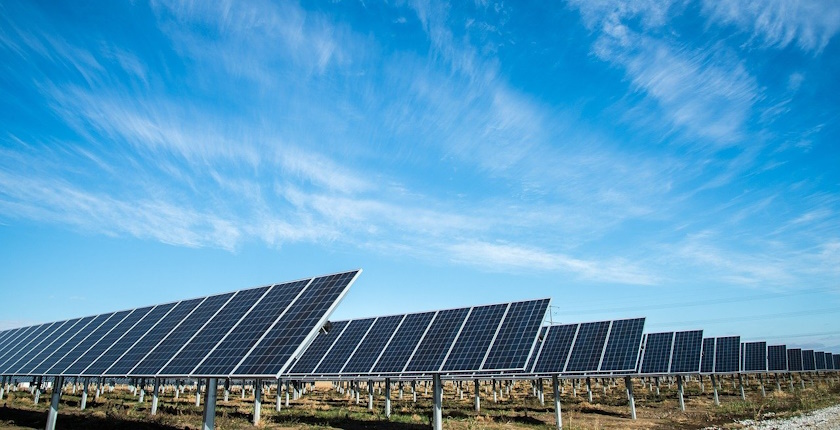
Photo: solar energy from Pixabay
For the first time ever, wind and solar energy in China have as of June this year collectively eclipsed coal in capacity, according to the latest data from the country’s National Energy Administration (NEA).
Rystad Energy’s analysis forecasts that by 2026, solar power alone will surpass coal as China’s primary energy source, with a cumulative capacity exceeding 1.38 TW or 150 gigawatts GW more than coal.
Despite coal’s early advantage, with around 50 GW of annual installations before 2016, the country has made substantial investments to expand its renewable energy infrastructure, Rystad noted.
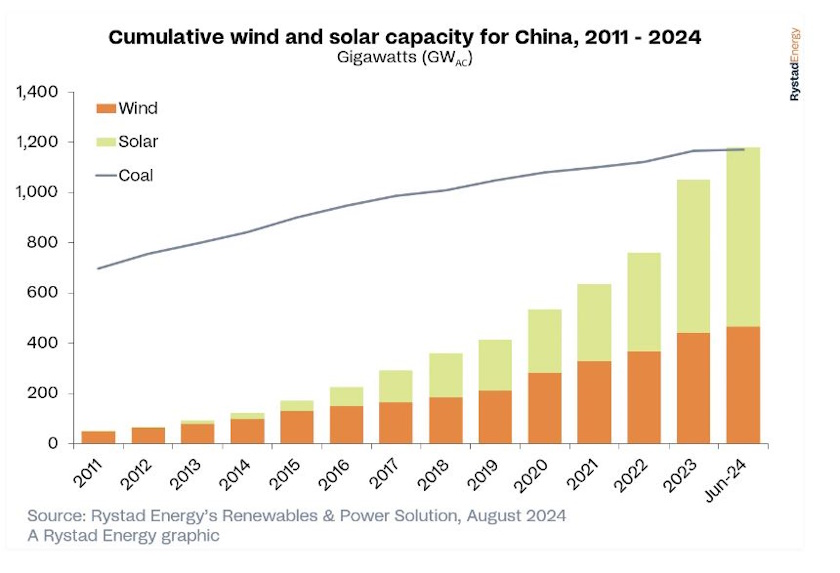
According to the report, since 2020, installations of wind and solar energy have consistently exceeded 100 GW per year, three to four times above the additions in the coal segment. For example, last year China set a record with 293 GW of wind and solar installations, bolstered by gigawatt-scale renewable hub projects from NEA’s first and second batches connected to the country’s grid.
In the meantime, the coal power sector is moving in the opposite direction. Last year, approximately 40 GW was added, but the figure plummeted to 8 GW in the first half of 2024, according to Rystad estimates.
The government is providing support for renewables while pressuring coal power to become cleaner. The measures are focused on phasing out smaller coal plants, upgrading existing ones to reduce emissions and enforcing more stringent standards for new projects.
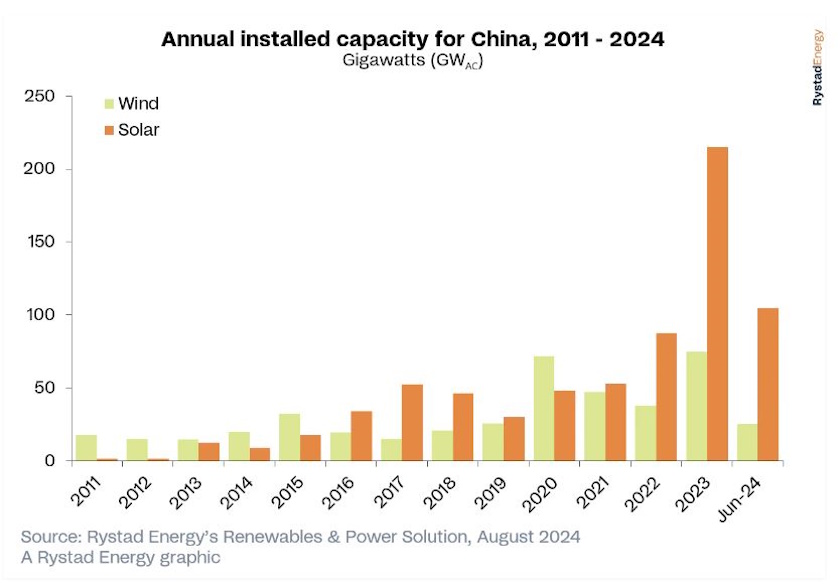
A record 216 GW of new solar capacity was installed last year. With 105 GW added in the first half of this year, Rystad expects China to exceed 230 GW in total in 2024.
The wind power capacity expansion rate rebounded last year, with an overall 75 GW. From January until the end of June, 25 GW of new capacity was added, with estimates that another 50 GW would come online in the second half of this year.
Deng: A pivotal moment
“We’re at a pivotal moment for both China and the global energy transition,” said Simeng Deng, Senior Analyst at Rystad Energy.
The country, in his words, is on track to shed its reputation as the world’s largest greenhouse gas emitter and power consumer. Solar energy will be central to this transformation, he added.
According to Deng, the shift is transforming China from a coal-dependent giant into a leader in clean energy.





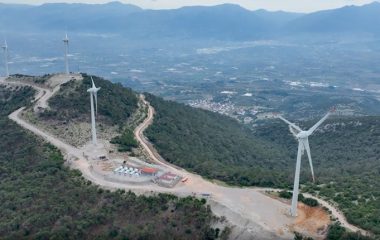

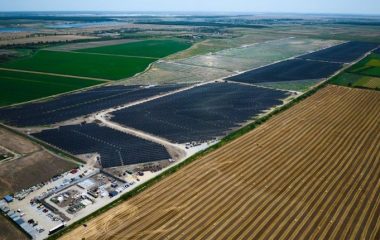

Be the first one to comment on this article.